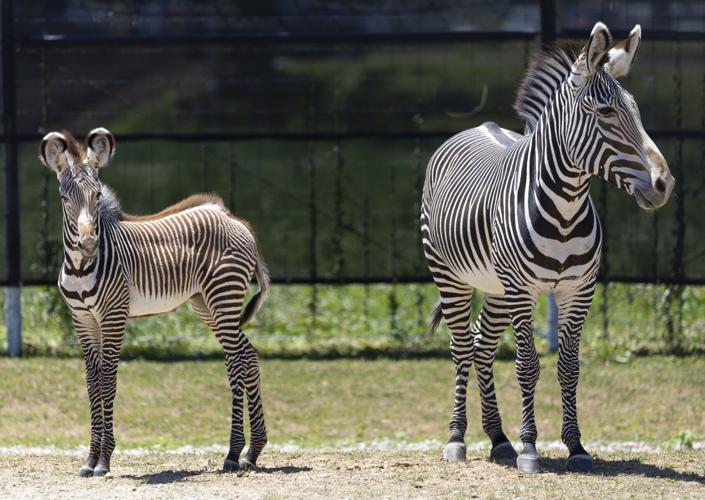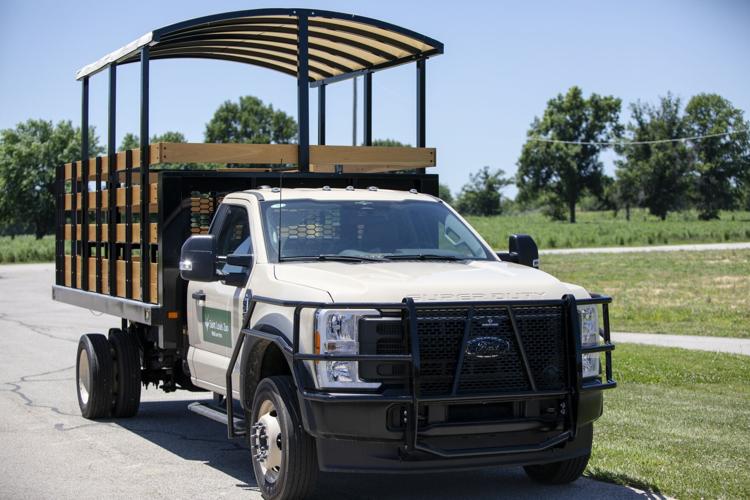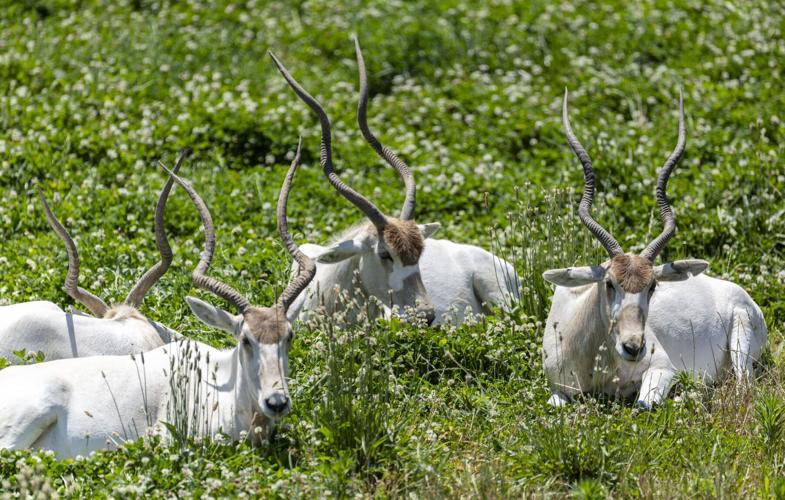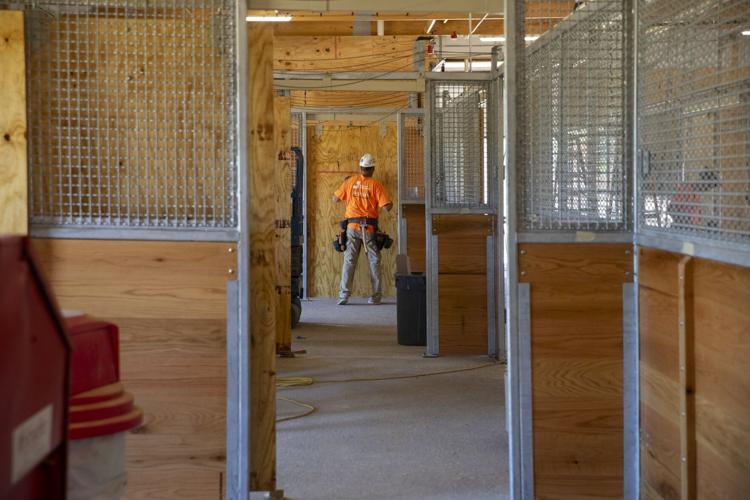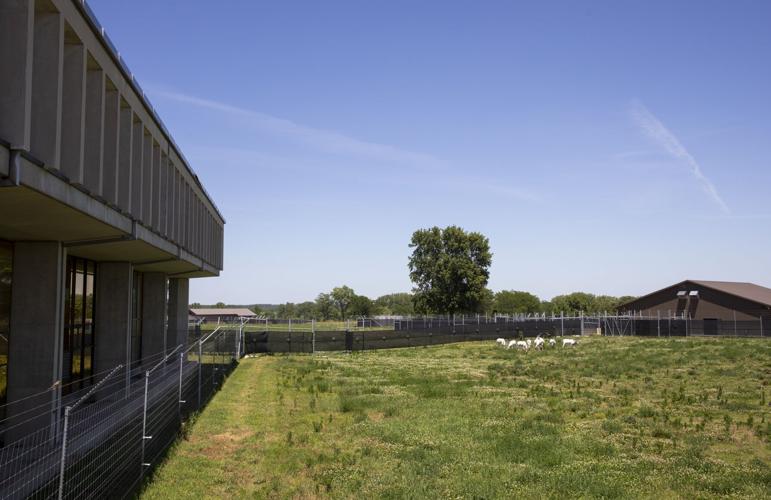ST. LOUIS COUNTY — One main goal of the St. Louis Zoo WildCare Park is to breed wild animals.
So far, so good.
The safari-style zoo is set to open in Spanish Lake in the spring of 2027, director Sabarras George said at a media event Friday. At the moment, the 425-acre property only has 17 animals on it.
One of them, a Grevy’s zebra named Roxie, was born at the park in April. When her mother, Gemma, was brought to the park, the zookeepers did not realize she was pregnant, said Martha Fischer, general curator of the park.

Zebras Gemma, right, and her foal Roxie, who was born on April 16, 2024, rest in an enclosure in the Kent Family Conservation and Animal Science Center section of WildCare Park in St. Louis County on Friday, June 14, 2024. Zebras are some of the animals visitors will see when the park opens in 2027.

A potential truck that would be used for future safaris at WildCare Park in St. Louis County on Friday, June 14, 2024.
And there is at least one more baby animal on its way, and probably more.
The park is home to 12 addax, a critically endangered species in the antelope family. Eleven are female, one is male.
“The male knows his role, and I think he has already completed his goal. So 8½ months from now, we expect to have calves on the ground,” Fischer said.
People are also reading…
The gestation period for addax is 8½ months. One looks like she will give birth in about a month, Fischer said. And while the other females are not yet showing signs of pregnancy, she said she expects they will soon.
Animals at the WildCare Park will be given room to roam and live together. In one section, they’ll live on about 100 acres; in another, they will have about 60 acres of verdant grasslands.
Human visitors will be driven through the areas in safari vehicles. The animals can come as near or stay as far away as they wish.
That means less stress for the animals. The more comfortable they are, the more likely they will be to breed, Fischer said. The staff will also make sure the animals receive the right diet and live in the right environment, she said.
“They’re pretty quick to adapt and follow their natural instincts,” she said.

The addax enclosure in the Kent Family Conservation and Animal Science Center sits next to the Conservation Center at WildCare park in St. Louis County on Friday, June 14, 2024.
When it is completed, the park will be home to around 250 adult animals representing around 30 species, she said. Most will be hooved mammals, and none will be the kind of animals that eat animals.
Although native predators live in the area, including coyotes and bobcats, Fischer said the animals at the park will be large enough to stand up to them.
Construction crews are busy working to get the park ready for the introduction of new animals — a total of 40 by the end of this year. Some will come from the zoo campus in Forest Park, though no entire species will be transferred to the North County location.

Addax rest in the grass in the Kent Family Conservation and Animal Science Center section of WildCare Park in St. Louis County on Friday, June 14, 2024.
Almost all of the animals will come from accredited members of the Association of Zoos & Aquariums, which keeps close track of member animal genetics.
By following the association’s recommendations, zoos can assure the best matches for breeding, to conserve and propagate the species, Fischer said.
Before the land was sold in 2018, it was a golf course. The park is now encouraging native grass to take over the golf course grass, and has not otherwise done much to change what will become the safari areas.
Away from the public areas, four of the park’s eventual 12 barns have been completed. Four more animal barns and two hay barns are under construction. Barns for white rhinos and giraffes will be more specialized, so they will be built later.
On Friday, the zoo released an economic impact study predicting the park will generate more than $660 million for the region in the next 10 years, from the park’s own operating expenses, jobs both at the park and other businesses and through state and local tax revenues.

A construction worker works on a barn that will eventually house animals that will be seen in 2027 at WildCare Park in St. Louis County on Friday, June 14, 2024.
The study, which was commissioned by the zoo, predicts an average of 421,900 visitors will come to the zoo each year.
About 43% of the visitors will come from outside the St. Louis region, the study predicts, and they are expected to spend $184 million over 10 years.
“WildCare Park will bring with it a major tourism boost for our region and an economic boost for north St. Louis County,” said St. Louis County Executive Sam Page in a statement.
As of now, there are no retail businesses within 1½ miles of the park.
Roxie, a Grevy's zebra, was the first animal born at the St. Louis Zoo's WildCare Park on April 16, 2024.










